
Business
Female Architects Leading the Historically Male-Dominated Industry
As we all continue Women’s History Month, Hers Magazine would like to recognize women who are change-makers in their professions. The women at Atlanta-based global architecture firm, tvsdesign, are currently making history by leading their company in a historically male-dominated field.
At the helm of the firm is Janet Simpson, the first female president of the architecture firm since it was founded in 1968. Under her leadership, 47 percent of the firm is made up of women with 25 percent of the women holding leadership roles, which is rare. In addition to the president, the CFO position is also held by a female. We spoke to Simpson and two of her team members—Associate Principal Sal Lalani and Principal Jeanie Lim—about their experiences as women in architecture.
Q: Tell us a little bit about yourself.
Jeanie: I’m Jeanie Lim, and I was born in Busan, South Korea. I came to the U.S. for graduate school (UCLA) when I was 24 years old and stayed here. I’m a mom of two girls. I enjoy mountain biking and skiing. I’m a principal at tvsdesign.
Janet: I’m Janet Simpson, I am 47 and I was born in Montgomery, AL. I love to cook, read and travel. I am the President & CEO of tvsdesign
Sal: Sal Lalani, 36 years old, born in Bombay, India. Architect – Married to an architect. Associate Principal at tvsdesign. Project Manager, which at tvsdesign means a generalist that does a bit of everything on a given project: management, client coordination, consultant coordination, design, technical, scheduling, business, staffing, etc.
Q: Have you always wanted to be an architect? What did you imagine yourself being as a child?
Jeanie: I always loved art classes—art teachers liked my work and encouraged me to become an artist. Architecture has more of a public service element to it and I really like the idea of impacting the communities we design for.
Sal: No–I always wanted to be a fashion designer. I started my undergraduate studies as a fashion major and was pushed into Interior Design by my mother. I was never that interested in Interiors and always knew that I would simply use it as a stepping-stone for Architecture
Q: What is the purpose of tvsdesign?
Jeanie: tvsdesign is a global architecture and interior design firm founded in 1968. As architects, we design for people’s lives through forms of space.
Janet: We are designers of the built environment with a dedication to Inspiring Conversations, Remarkable Designs and Trusted Relationships.
Sal: We deliver wholistic, thoughtful and practical architectural and spatial solutions to our clients.
Q: Tell us about your exact role at the firm. What part do you play in its success?
Jeanie: I’m a principal overseeing many complex projects around the world. I am very hands on as a project architect and also have the role of design quality control, which helps to ensure our projects are safe and are tracking on time and on budget.
Janet: tvsdesign is a 100% Employee Stock Owned Firm (ESOP). As President of the firm I am responsible for the operations and financial performance of the firm. I don’t own the firm, I serve the people in the firm and help create frameworks for the firm to thrive and provide exemplary service to our clients.
Sal: I work in the Public Assembly segment, with a focus specifically on convention centers. Part of my job as an associate principal is to have my finger on the pulse of the convention center marketplace and trends such that my team can confidently lead a client towards optimum value and deliver the best solution for a given project. A major part that I play in the firm’s success is facilitating integrated project delivery: a process by which all owner, code, stakeholder, contractor and consultant input is baked into the final design solution and schedule for the project. The ability to adequately facilitate this process is only honed via experience.
Q: What did the process of becoming an architect entail? Was the road a hard one to travel?
Jeanie: Becoming an architect was a very fun process because the field is artistic and technical in equal measure. I wouldn’t say architecture is harder than other professions. My hardship is more general having 9 to 5 jobs and being a mom at the same time.
Sal: Well, given that I started as a fashion design major, I first completed 4 years of undergraduate studies, receiving a MS in Design. After working for 2 years as an interior designer in an architecture/design firm in DC, I decided to go back to school for a Master of Architecture. To apply for this program, candidates must have architectural portfolios already developed, by which their merit and eligibility is assessed. I enrolled in the 3.5 years M.Arch degree program at GA Tech. After graduation, one is required to take and pass 7 professional exams and work professionally for at least 2 years under a licensed supervisor. At the end of this, you can officially call yourself an architect.
Q: Are you the first woman in your family to have a leadership role in a male-dominated industry?
Jeanie: Yes. my mom was a principal in elementary school, but education is not considered a male-dominated industry.
Sal: No. My grandmother was a politician in Bombay and even ran for mayor for the city. My mother has been a leader in all her professional endeavors, including project management for Tech/IT & in real-estate.
Q: How do you manage your architectural career and life at home?
Jeanie: I needed to reduce business trips in order to have the necessary time with my kids. You have to rely on good colleagues around you to help you out with that.
Sal: So far it’s been a non-issue. But I don’t have any kids yet. Post-children outlook is yet to be determined.
Q: Name some of the most important qualities that any female working (or aspiring to work) in a male-dominated field should have.
Jeanie: See people as human, not men or woman. Don’t expect men to protect you and serve you just because you’re a woman. Don’t pretend you’re a man, because you’re not. It’s OK to be a woman and it’s OK to be a great architect at the same time.
Janet: A level head and sensitivity to people. There are always multiple sides to every story so it is best to ask good questions and gain perspective before you react. Being intentional about developing effective communication skills is critical. It is true that it isn’t always about what you say, it is how you say it that impacts what people hear.
Sal: Ability to “fake it till you make it”. That’s how men climb the ladder whereas women hesitate.
Q: Do male coworkers ever try to belittle or challenge your authority? If so, tell me about the situation that occurred.
Jeanie: No, not in my office. I’ve had some of that experience with construction teams but it was very limited and didn’t last long once they got to know me. Things worked out pretty smooth.
Q: How often do you receive backlash for working in a male-dominated field? Are you able to tune negativity out easily? Why or why not?
Janet: I don’t think I experience a lot of backlash but I certainly experience challenges. I typically stay focused on the work and what we are trying to achieve. That doesn’t mean I tune out negativity. I listen to it and try to understand where it is coming from. I believe in creating trusted relationships and so I use that as a filter for my actions. It changes your behavior when you stop and ask yourself, how do I manage this to create a good environment for a trusted relationship to exist here?
Q: Who criticizes your decision to be an architect more—men or other women?
Jeanie: Both men and women have told me I work too hard and too long. One time, my female friend who is a homemaker told me she felt sorry for my kids not having their mom at home all the time. As I think of it, women around me seem to be slightly more criticizing rather than supportive.
Q: What has been your most successful project?
Jeanie: Music City center in Nashville is by far my most favorite project.
Sal: Haven’t had one that I would label “most successful”. They have all had their unique challenges and lesson learned for the next one.
Q: If you could go back in time and do something differently, what would it be?
Jeanie: I personally wish I had kids earlier. So after they go to college, I can work normal hours traveling around with no limit and still be full of energy.
Q: Why should society encourage women to aspire to fill roles other than those that are typically female-dominated if they are interested in them?
Jeanie: It’s very important that women are well represented in EVERY industry so that we have a voice about the things that impact our personal lives and us as a society.
Janet: There is no benefit to individuals or society to send messages to anyone that you should choose a career based on your gender. It is rewarding to have a career that allows you to be challenged and gain confidence as you see just how much you are capable of doing. The focus should be on helping people know how to make good choices not in limiting their choices because of broad assumptions.
Sal: Because it’s in the best interest of society: Women are truth seekers–thoughtful, precise, compassionate, global thinkers. Because women are best suited to address the needs of other women–and if women comprise 50 percent of the global population, we need women in positions of leadership and influence to best address this target market
Q: Who did you look up to as a young girl? What were some of your interests?
Janet: I have already admitted how old I am, so I was an impressionable child in the 1970s when the Enjoli perfume commercial came out and it made a pretty big impression on me. If you don’t remember the commercial, it had a beautiful, sassy woman singing, “I can bring the bacon and fry it up in a pan.” It sounds somewhat silly to say but I was strongly influenced by that message—but I never bought the perfume.
Sal: I looked up to my Math and Physics instructors. Along with fashion, I was interested in computer programming as well.
Q: How can we, as a society, help girls feel empowered to take charge in male-dominated industries?
Jeanie: We’re already moving into the right direction and from my perspective there’s no need to hurry. I strongly believe we have a good trend and will eventually get there.
Janet: This statement could be taken the wrong way but maybe we should just refer to them as industries and stop labeling them as male-dominated.
Sal: Show them the slew of success stories.
Q: If you could give advice to young girls in just one sentence, what would you tell them?
Jeanie: Don’t give into pressure from other people, and do as your heart tells you.
Janet: You don’t have anything to be self-conscious about and it’s just fine to not be like everyone else.
Sal: Practice the art of speaking with conviction while still being humble.
Q: What would you say to a woman or girl who doesn’t feel as if women should seek careers in male-dominated fields?
Jeanie: If we limit ourselves, we will never achieve true equality. We OWE it to future generations to continue making these strides. If we don’t place ourselves in male-dominated fields, women will be always considered second class citizens.
Sal: Prove them wrong via personal example
Q: Where do you see yourself in five years?
Jeanie: My youngest daughter will go to college in five years. I will still work, and I plan to travel more and enjoy my life with my husband and friends.
Sal: I’m honestly not sure. I am two weeks away from having my first child and cannot speak to how this will shift my priorities and outlook on my life.
Q: Do you think the percentage of women architects will increase over time? Why or why not?
Jeanie: I already see a trend of more women pursuing architecture, and am confident that the numbers of registered female architects is only going to increase.
Sal: Yes, absolutely. Because women are an asset to the field, and the more evident this becomes, the more they will be embraced and celebrated.

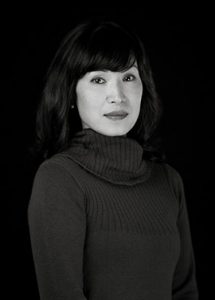
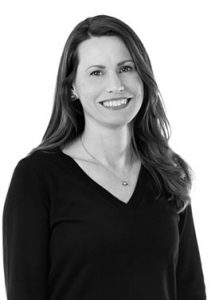
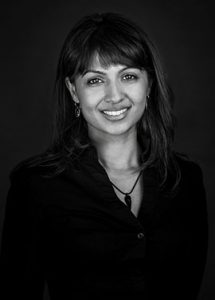

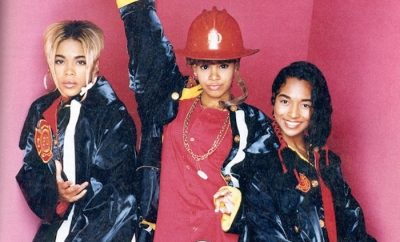
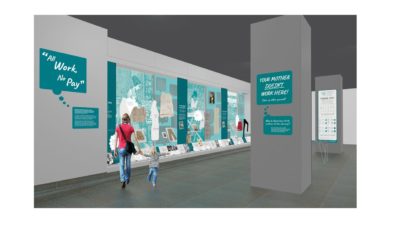





0 comments